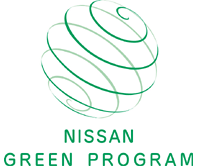
Nissan Motor Co. Ltd., last week released this years progress report on its recycling efforts. Through its extensive recycling efforts, Nissan has already exceeded the targets set under the Nissan Green Program 2010 mid-term environmental action plan.
Nissan’s love of recycling may have been spurred by trying to achieve compliance with the Japan Automobile Recycling Law, enacted on January 1, 2005. The progress report focused on three key areas:
- Automobile Shredder Residue (ASR)ja
- Airbag-related components
- Fluorocarbons (CFCs/HFCs)
Under the Nissan Green Program 2010 action plan, the company plans to accelerate its recycling efforts to achieve an average 95% recovery rate for end-of-life vehicles (ELVs) by FY2010. In Japan, this is four years ahead of the 2015 regulations.
In FY2006, Nissan recycled 95,240.3 tons from the 128,827.9 tons of ASR (635,440 vehicles) recovered. This represents a recovery ratio of 73.9%, which exceeds the 70% standard required by law. Nissan is already in compliance nine years ahead of the 2015 legal requirement.
The effective recycling recovery rate stands at 95.2%*, against the 95% target set under the Nissan Green Program 2010 environmental action plan. This has been accomplished four years in advance of the 2010 target.
A total of 439,526 airbag-related products (229,049 vehicles)were received. Recycling involve ELV recovery processing as well as on-board deployment. The airbag recycling ratio stood at 94.3%, exceeding the legal requirement of 85%.
A total of 160,200kg of fluorocarbons were collected (507,037vehicles) and processed appropriately.
The cost of these recycling efforts amounted to 5,523,193,204 yen. On the contrary, recycling fees and income generated from the business of managing recycling operations totaled 5,642,113,359 yen, contributing to a net surplus of 118,920,115 yen.
The cumulative balance from the recycling operations from FY2004 to FY2006 results in a deficit of 58,206,881 yen ($478,460 dollars), which is consistent with the forecast cost.
The company says it will continue with its efforts to reach the ultimate recovery ratio of 100% i.e. to reuse and recover 100% of the materials from ELV into usable resources.
Additional efforts to increase ELV recycling include:
- Materials recycling to develop new methods in creating usable materials from ELVs
- Measures to achieve zero land-fill waste (in Japan)
In the long-term, Nissan is also making improvements to the recyclability of new vehicles including:
- Expansion of vehicle design to enable easy dismantling and recycling of the vehicle
- Development of recycling technologies for hybrid, electric and fuel cell vehicles
Are you listening American car companies? You need to wake up fast, you are falling behind in the hybrid market, the EV market, the Plug in market, and now you are about to be trumped on the life cycle market. You will be (even more) irrelevant in a couple years if you don’t get your act together. Here is a quick sketch of a car I think will make you billions. Electric with small gas back up generator for long trips. The gas generator only is used to charge the battery, not to drive the car, and as such the tank is only about 5 gallons. It should come in two seater sports model, 4 door family sedan, and light truck. I want to be able to plug it into my wall socket, some built in solar panels on the roof for trickle charging in the sun while I am in the office working would be nice too. OH yea and it should be designed to be fully recyclable. Call me when your done with that.
* Recovery rate: Nissan’s recovery ratio for ELV (actual value) stood at 81.6% according to materials distributed in May 2003 by the Japanese government. The balance of 18.4% represents ASR. recovery At 73.9% recovery rate for ASR (18.4%), the combined effective recovery rate is calculated at 95.2%. Recovery Rate 95.2% = 81.6%+ ASR Recovery Rate of FY2006 (18.4% x 73.9%)
Good idea!